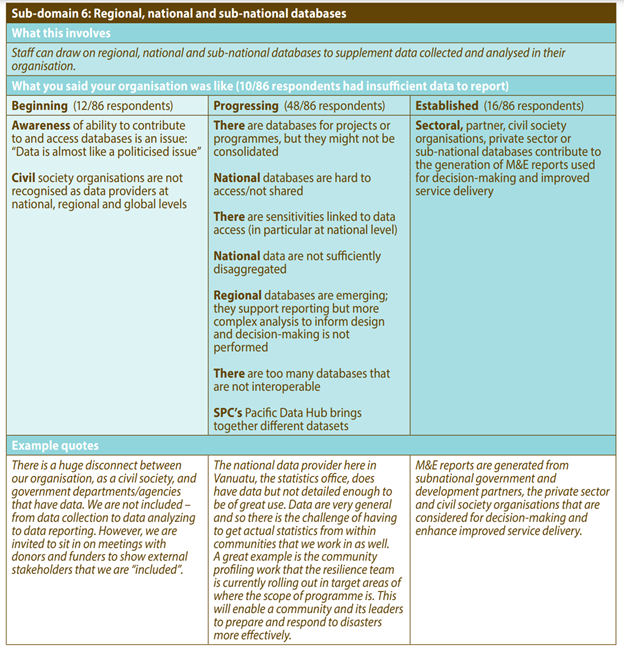The Pacific MEL tool was originally developed as part of a collaborative project to develop a ‘roadmap’ to strengthen capacity in the Pacific region for contextually and culturally appropriate monitoring, evaluation, research and learning to support improved governance and decision-making.
Unlike a road map, which is based on a fixed plan over known territory, the map is based on the metaphor of the Marshall Islands navigational stick chart, 'rebbelib’, that supports navigation in a dynamic environment. It outlines where we currently are with respect to MEL in the Pacific region, and it shows where we want to get to (the islands), the challenges and opportunities on the way (swells and waves) and how we plan to get there.
This diagnostic tool adapts the UNAIDS Organizing Framework for a Functional National HIV M&E System. It consists of self-assessments at a national level in terms of 10 items across three MEL domains: (i) people, partnerships and planning; (ii) collecting, verifying and analysing data; and (iii) using data for decision-making.
Data were collected for the first assessment in 2019 through an online survey and interviews, where respondents rated their national M&E system in relation to the ten MEL sub-domains in terms of three levels of MEL capacity maturity – beginner, progressing or established. Respondents were encouraged to consult with colleagues in undertaking the ratings.
This data was used for the next stages of the project- a Pacific MEL convening over three days in Fiji, including three talanoa sessions where 15 participants shared their performance stories, five action learning sessions, individual Strengths, Weaknesses, Opportunities and Threats (SWOT) analysis (using the metaphors of voyaging), and two group sense-making sessions of all the rich data; an implementing and donor partner agreement; a ‘Call to Action’ by convening participants; and a second online survey to determine individual and organisational plans and priorities for the next 12 months.

'Pacific MEL Diagnostic Tool' is referenced in:
Framework/Guide
- National M&E Systems :